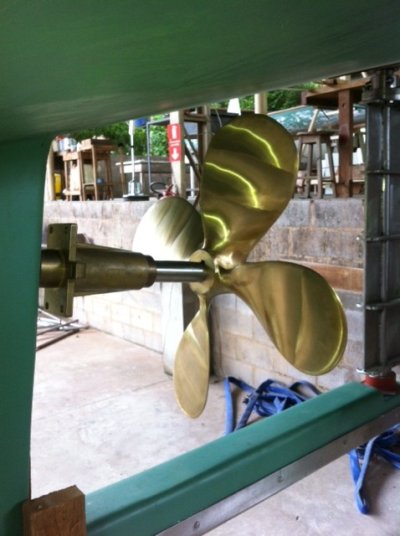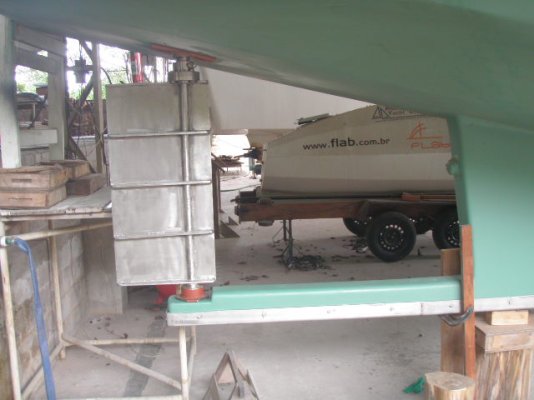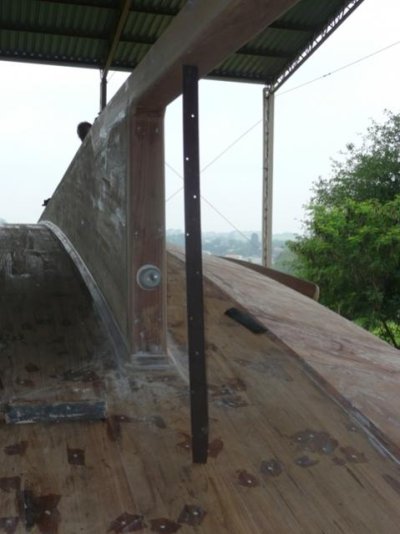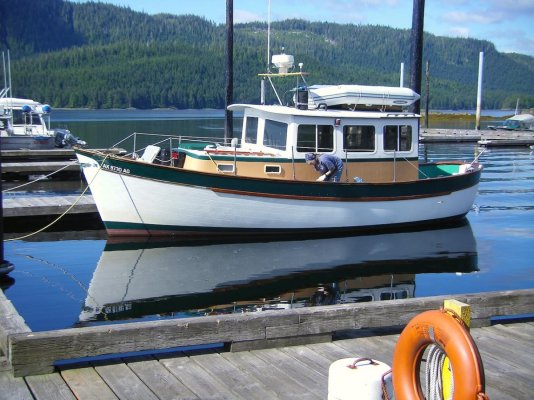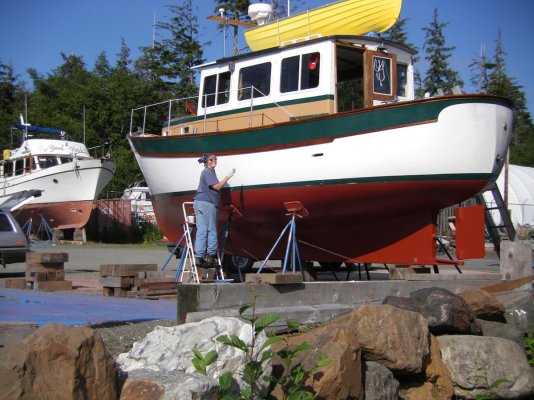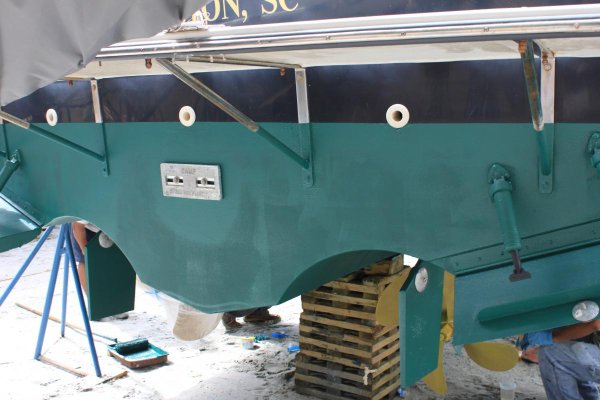G'day Eric.
Thanks for your reply mate. In response to your post, I appreciate all feedback, suggestions and help beit good, bad or indifferent so please don't think you need to walk on eggshells around me or feel that I only want to hear positive things or only want to have sunshine shot up my a**e.
I post on hear to show everyone what im doing and to open up my project to get ideas and help and to receive feedback. Knowledge sharing is a wonderful thing and without advice from people like you and everyone else on here that has helped me along the way then i'd be up sh!t creek so don't ever think that you're raining on my parade. I might tell you to piss off or ignore your suggestion but that doesn't mean I don't value it
In relation to the hook, its now gone. I gave AXE a nice straight bum with plenty of prop clearance. I thought about leaving the hook as it would be like a giant trim tab but it was easier to make it straight than hook it and still give it the prop clearance I needed.
Now in relation to the last section of your post pertaining to the timber. Im not sure I understand properly so if my answer makes no sense then ive not understood what you meant and will need clarification.
The only original part of the boat that was kept was the keel. The rib timbers are second-hand "Seasoned" Western Australian Hardwood called Jarrah. They measure 100mm x 50mm. Two reasons why I went with second-hand "Seasoned" jarrah.
- Cost - Definitely played a big factor. It was less than half of what new timber cost
- Seasoned - The jarrah came out of a house that was built in the 60's and was pulled down. The timber actually came out of the roof and was essentially in an oven for over 50 years.
Not only is this timber dry, but it is rock solid and is like iron. Ask any Australian and they will tell you the same thing about Seasoned WA Jarrah.
In relation to the fixings. Because the timber is so hard, I have had to bolt the ribs together thus moving away from the traditional layup and joining of the members and thus making it look like the ARK. Any screws I used either snapped the head off the screw, stripped the thread of the screw or I snapped the driver bit in the drill.
The bolts I am using range in sizes and are dependant on where I am using them but the sizes are
- M12 cup head bolts (12mm thick Bolts)
- M10 cup head bolts (10mm thick Bolts)
- 100mm Bugle head batten Screw (5mm thick)
- 70mm Bugle head batten screw (5mm thick)
To give you an idea of just how strong these bugle head screws are in the jarrah, I had to cut them off with the grinder and smash the sheets off with a sledge hammer because I snapped all but three of my bugle head drivers and they are strengthened tooling steel
Also not forgetting that I am using epoxy as the main fixing here. The screws are just used to take the tension of the glue line and move it to the sheet face on tight bends. The glue I am using is a high strength epoxy filler powder glue. The glue is actually designed to glue sail masts to ships so the strength properties are unbelievable. Then there's the epoxy filleting and glass matting. It may not look like much now but she'll turn out ok and will out last me with the right maintenance and care.
also adding to the strength is the 450GSM double biaxle cloth that I will be putting on her, plus the 5 mm of epoxy to cover the weave then another 5-8mm of fairing filler powder/epoxy resin mix.
There is nothing conventional or typical in the way I am building this boat. There must be boat builder that read this and think OMFG what is he doing but im not building this to the standards of peoples boats like Portuguese etc. They are in a totally different league. Actually I'm not in any league, im not really in the same game lol
As I have always said. I am not a boat builder. I am just a bloke doing his best to build one.
Whilst this is my first ever attempt at building a boat, I have spent 19 years as a Carpenter. Well 15 years as a Carpenter and 4 years as an Apprentice Carpenter. I know my timbers and am more than confident that the timber and fixings will be more than capable for the job at hand

Below are pics from this mornings effort


































 ...
... 






